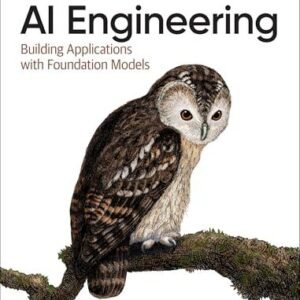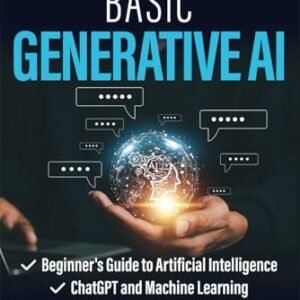In today’s rapidly evolving industrial landscape, the Internet of Things (IoT) is redefining how we approach operational efficiency, productivity, and asset management. As industries strive to harness the power of connected devices, the need for smarter solutions grows increasingly critical. Enter artificial intelligence (AI) — a game-changer that, when combined with Industrial IoT (IIoT), can revolutionize the way we maintain and monitor equipment. Predictive maintenance, fueled by AI, not only minimizes downtime but also significantly reduces costs and extends the lifespan of machinery. In this article, we will explore how integrating AI-driven predictive maintenance into your IIoT strategy can enhance your operations, improve decision-making, and pave the way for a more resilient and intelligent manufacturing future. Through real-world examples and expert insights, we’ll uncover the transformative potential of this powerful synergy and why it is essential for companies aiming to stay competitive in an ever-changing market.
Table of Contents
- Understanding the Role of AI in Industrial IoT and Predictive Maintenance
- Key Benefits of Integrating AI-Driven Solutions for Enhanced Equipment Longevity
- Implementing a Successful AI-Powered Predictive Maintenance Strategy
- Case Studies: Real-World Applications of AI in Industrial IoT Maintenance
- Future Outlook
Understanding the Role of AI in Industrial IoT and Predictive Maintenance
The integration of artificial intelligence in the realm of Industrial Internet of Things (IIoT) is redefining how organizations conduct predictive maintenance. By harnessing vast datasets collected from connected devices, AI algorithms can analyze performance patterns, identify anomalies, and predict potential failures before they occur. This proactive approach not only extends the lifespan of machinery but also significantly reduces downtime and operational costs. Key methods through which AI enhances predictive maintenance include:
- Data Analysis: Leveraging machine learning to sift through historical and real-time data for insight.
- Pattern Recognition: Identifying correlations and trends to facilitate timely interventions.
- Automated Decision-Making: Utilizing AI to recommend maintenance actions based on predictive insights.
Moreover, the synergy between IIoT devices and AI algorithms culminates in a dynamic feedback loop that continuously optimizes maintenance strategies and operational efficiency. The real-time data from sensors connected to machinery feeds into AI systems that are capable of forecasting maintenance needs with remarkable accuracy. A comparative view of the traditional reactive maintenance strategy versus AI-driven predictive maintenance can be illustrated as follows:
| Traditional Maintenance | AI-Driven Predictive Maintenance |
|---|---|
| Scheduled downtime | Maintenance based on real-time data and forecasts |
| High repair costs due to unexpected failures | Lower costs through proactive interventions |
| Limited insights on machine performance | In-depth analysis and predictive insights |
Key Benefits of Integrating AI-Driven Solutions for Enhanced Equipment Longevity
Integrating AI-driven solutions into predictive maintenance strategies transforms the way industries manage equipment lifecycle. By leveraging advanced algorithms and machine learning, businesses can proactively identify potential failures before they occur. This not only reduces unplanned downtime but also extends the lifespan of equipment significantly. Key advantages include:
- Real-Time Monitoring: Continuous tracking of equipment performance ensures immediate detection of anomalies.
- Data-Driven Decisions: AI analyzes historical data to make informed predictions, optimizing maintenance schedules.
- Reduced Operational Costs: Fewer breakdowns lead to minimized repair expenses and enhanced resource allocation.
- Environmental Sustainability: Efficient use of machines leads to lower energy consumption and reduced waste.
Additionally, AI-driven predictive maintenance fosters a culture of innovation within organizations. By utilizing cutting-edge technology, companies can shift from reactive approaches to a more proactive mindset. This shift can lead to improved employee morale as workers engage with advanced tools that augment their capabilities. The results can be clearly illustrated in the following table:
| Aspect | Traditional Maintenance | AI-Driven Predictive Maintenance |
|---|---|---|
| Downtime | Unpredictable | Minimized |
| Cost Efficiency | Higher | Lower |
| Data Utilization | Limited | Extensive |
| Equipment Lifespan | Limited | Extended |
Implementing a Successful AI-Powered Predictive Maintenance Strategy
To craft a robust AI-driven predictive maintenance strategy, organizations must begin by laying a solid foundation with the right data infrastructure. This involves:
- Data Collection: Implement sensors and IoT devices across machinery to gather real-time data on performance, temperature, vibration, and more.
- Data Integration: Utilize platforms that can consolidate data from various sources, ensuring that it is accessible for advanced analytics.
- Data Quality Management: Regularly clean and validate data to maintain accuracy, as the effectiveness of predictive algorithms hinges on reliable inputs.
Once the data ecosystem is established, leveraging AI algorithms becomes paramount. These algorithms can identify patterns and anomalies, enabling organizations to anticipate potential failures before they occur. Key actions include:
- Model Selection: Choose the appropriate AI models, such as machine learning or deep learning, depending on the complexity of the data.
- Continuous Learning: Implement systems that adapt to new data inputs, refining predictions over time to increase accuracy.
- Dashboard Development: Create intuitive dashboards for real-time monitoring and alerts, allowing teams to respond swiftly to potential issues.
| Action Step | Description |
|---|---|
| Data Collection | Gather metrics on machine health and performance. |
| Algorithm Deployment | Utilize AI to analyze collected data and predict failures. |
| Performance Monitoring | Track the effectiveness of the predictive maintenance programme. |
Case Studies: Real-World Applications of AI in Industrial IoT Maintenance
One compelling example of AI in action is the case of a large manufacturing facility that integrated predictive maintenance into its operations using Industrial IoT technologies. By incorporating AI algorithms to analyze sensor data from machinery, the company was able to predict failures before they occurred, reducing unplanned downtime by over 30%. Key aspects of this implementation included:
- Real-time Data Analysis: Continuous monitoring of equipment behavior.
- Machine Learning Models: Accurate predictive outputs generated from historical data.
- Automated Alerts: Instant notifications sent to maintenance staff when anomalies were detected.
Another notable case features an oil and gas company that leveraged AI-powered predictive maintenance to optimize its operations across various drilling sites. By employing advanced analytics on IoT data, the firm significantly enhanced its operational efficiency and safety measures. The results were impressive:
| Metric | Before AI Implementation | After AI Implementation |
|---|---|---|
| Downtime Costs | $1.5M | $500K |
| Maintenance Frequency | Monthly | Quarterly |
| Incident Rate | 5 incidents/year | 1 incident/year |
Future Outlook
the convergence of Artificial Intelligence (AI) and the Industrial Internet of Things (IIoT) is fundamentally transforming how industries approach maintenance and operational efficiency. By embedding AI-driven predictive maintenance strategies into IoT frameworks, organizations not only enhance their operational resilience but also unlock new avenues for cost savings and productivity gains.
As the landscape continues to evolve, embracing these technologies will be essential for those looking to stay competitive in an increasingly data-driven world. The proactive insights provided by AI enable businesses to anticipate machinery failures, optimize resource allocation, and ultimately achieve a higher level of operational excellence.
As we move forward, the focus should remain on harnessing these innovative technologies responsibly and effectively. Whether you’re a seasoned industry professional or just venturing into the realm of IIoT, the journey towards smarter, more efficient operations is just beginning. Keep an eye on the horizon for the next wave of advancements that will further enhance the synergy between AI and IIoT—your future operations depend on it.





